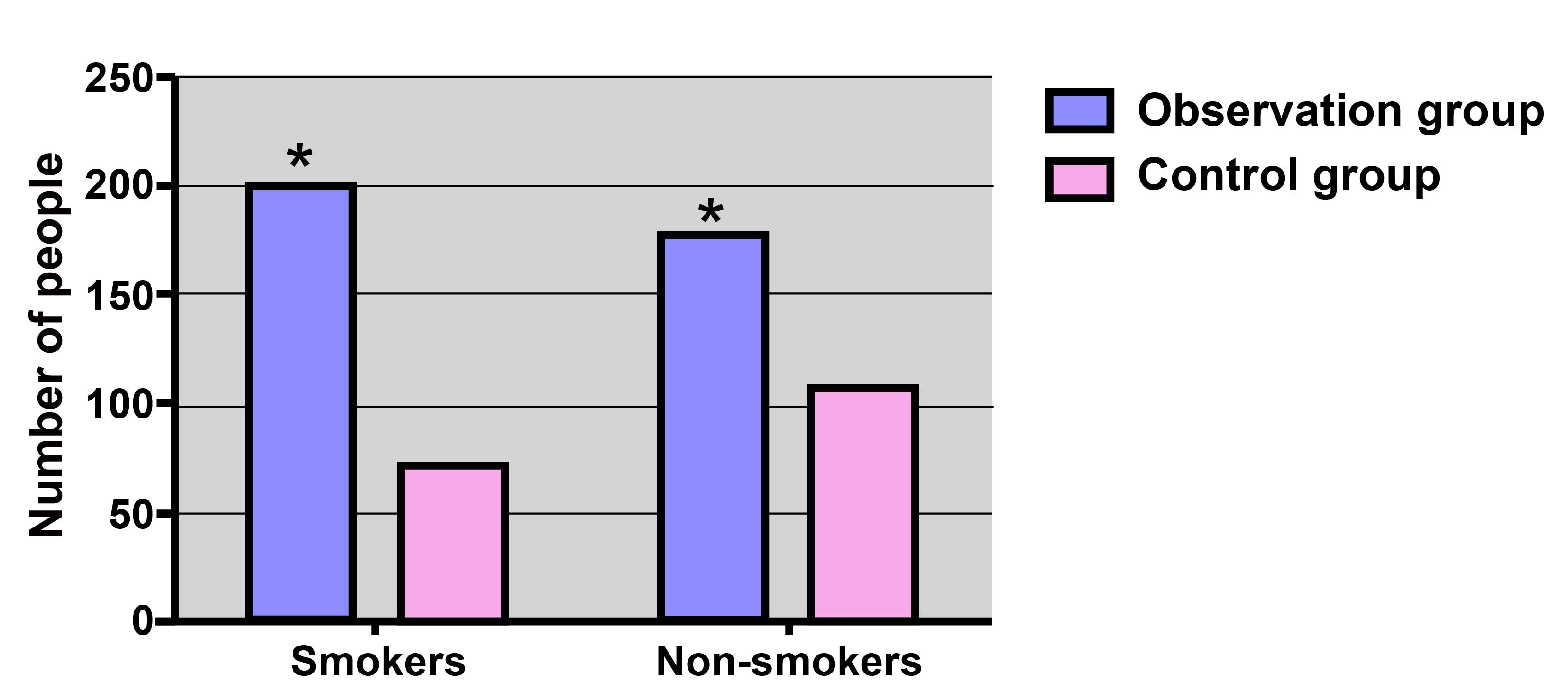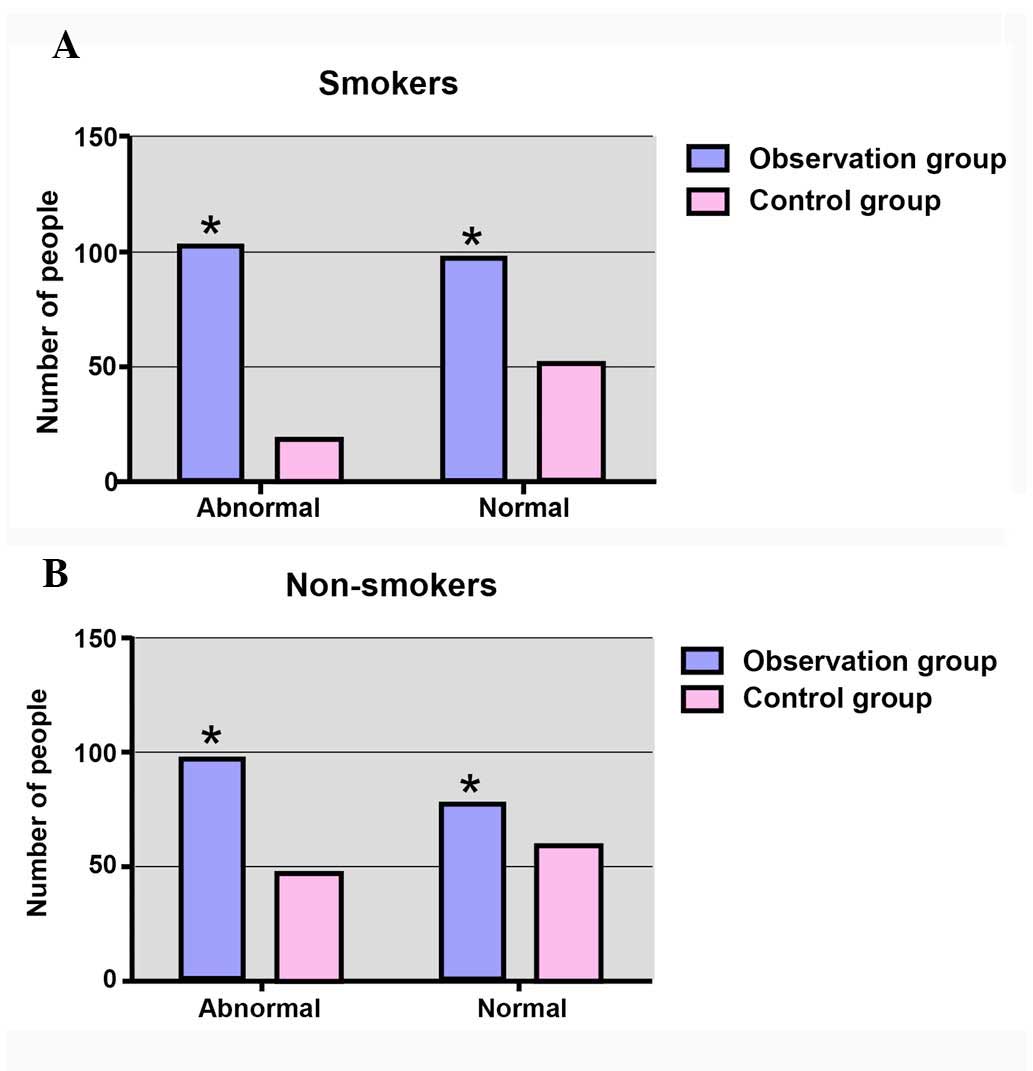|
1
|
Lira M, Rabbani E Kohlman, Junior B
Barkokebas and Lago E: Risk evaluation and exposure control of
mineral dust containing free crystalline silica: A study case at a
quarry in the Recife Metropolitan Area. Work. 41(Suppl 1):
S3109–S3116. 2012.
|
|
2
|
Petsonk EL, Rose C and Cohen R: Coal mine
dust lung disease. New lessons from old exposure. Am J Respir Crit
Care Med. 187:1178–1185. 2013. View Article : Google Scholar : PubMed/NCBI
|
|
3
|
Ji X, Wu B, Jin K, Luo C, Han R, Chen M,
Hou Z, Fan J and Ni C: MUC5B promoter polymorphisms and risk of
coal workers' pneumoconiosis in a Chinese population. Mol Biol Rep.
41:4171–4176. 2014. View Article : Google Scholar : PubMed/NCBI
|
|
4
|
Xia Y, Liu J, Shi T, Xiang H and Bi Y:
Prevalence of pneumoconiosis in Hubei, China from 2008 to 2013. Int
J Environ Res Public Health. 11:8612–8621. 2014. View Article : Google Scholar : PubMed/NCBI
|
|
5
|
Hung YP, Teng CJ, Liu CJ, Hu YW, Hung MH,
Tzeng CH, Liu CY, Yeh CM, Chen TJ and Chiou TJ: Cancer risk among
patients with coal workers' pneumoconiosis in Taiwan: A nationwide
population-based study. Int J Cancer. 134:2910–2916. 2014.
View Article : Google Scholar : PubMed/NCBI
|
|
6
|
Wu B, Ji X, Han R, Han L, Wang T, Yang J,
Zhu B and Ni C: GITR promoter polymorphism contributes to risk of
coal workers' pneumoconiosis: A case-control study from China.
Immunol Lett. 162:210–216. 2014. View Article : Google Scholar : PubMed/NCBI
|
|
7
|
Blackley DJ, Halldin CN, Wang ML and Laney
AS: Small mine size is associated with lung function abnormality
and pneumoconiosis among underground coal miners in Kentucky,
Virginia and West Virginia. Occup Environ Med. 71:690–694. 2014.
View Article : Google Scholar : PubMed/NCBI
|
|
8
|
Crim C, Celli B, Edwards LD, Wouters E,
Coxson HO, Tal-Singer R and Calverley PM: ECLIPSE investigators:
Respiratory system impedance with impulse oscillometry in healthy
and COPD subjects: ECLIPSE baseline results. Respir Med.
105:1069–1078. 2011. View Article : Google Scholar : PubMed/NCBI
|
|
9
|
Zuccarini G, Bocchino M, Assante LR, Rea G
and Sanduzzi A: Metformin/glibenclamide-related interstitial lung
disease: A case report. Sarcoidosis Vasc Diffuse Lung Dis.
31:170–173. 2014.PubMed/NCBI
|
|
10
|
van Dalen C, Harding E, Parkin J, Cheng S,
Pearce N and Douwes J: Suitability of forced expiratory volume in 1
second/forced vital capacity vs percentage of predicted forced
expiratory volume in 1 second for the classification of asthma
severity in adolescents. Arch Pediatr Adolesc Med. 162:1169–1174.
2008. View Article : Google Scholar : PubMed/NCBI
|
|
11
|
Pan S, He H, Guan B, Liu T, Yuan X, Ma W
and Xie Y: The effect of endoscopic sinus surgery on pulmonary
function of chronic rhinosinusitis patients with asthma. Lin Chung
Er Bi Yan Hou Tou Jing Wai Ke Za Zhi. 28:1118–1121. 2014.PubMed/NCBI
|
|
12
|
Dashti HS, Shea MK, Smith CE, Tanaka T,
Hruby A, Richardson K, Wang TJ, Nalls MA, Guo X, Liu Y, et al:
Meta-analysis of genome-wide association studies for circulating
phylloquinone concentrations. Am J Clin Nutr. 100:1462–1469. 2014.
View Article : Google Scholar : PubMed/NCBI
|
|
13
|
Pellegrino R, Viegi G, Brusasco V, Crapo
RO, Burgos F, Casaburi R, Coates A, van der Grinten CP, Gustafsson
P, Hankinson J, et al: Interpretative strategies for lung function
tests. Eur Respir J. 26:948–968. 2005. View Article : Google Scholar : PubMed/NCBI
|
|
14
|
Kallberg H, Ding B, Padyukov L, Bengtsson
C, Rönnelid J, Klareskog L and Alfredsson L: EIRA Study Group:
Smoking is a major preventable risk factor for rheumatoid
arthritis: Estimations of risks after various exposures to
cigarette smoke. Ann Rheum Dis. 70:508–511. 2011. View Article : Google Scholar : PubMed/NCBI
|
|
15
|
Churg A, Hall R and Bilawich A:
Respiratory bronchiolitis with fibrosis-interstitial lung disease:
A new form of smoking-induced interstitial lung disease. Arch
Pathol Lab Med. 139:437–440. 2015. View Article : Google Scholar : PubMed/NCBI
|
|
16
|
MPN, . World medical association publishes
the revised declaration of helsinki. Natl Med J India.
27:562014.
|
|
17
|
Jin Y: Data acquisition and processing
system of pulmonary function instrument. Electronic Technology and
Software Engineering. 4:220–221. 2014.(In Chinese).
|
|
18
|
Mu KJ: Compiled normal values of pulmonary
function nationwide. United Press of Beijing Medical University and
Peking Union Medical College; 1990, (In Chinese).
|
|
19
|
Gooch JW: Membrane Filter Method.
Springer; New York: 2011, (In Chinese).
|
|
20
|
Talhout R, Schulz T, Florek E, van Benthem
J, Wester P and Opperhuizen A: Hazardous compounds in tobacco
smoke. Int J Environ Res Public Health. 8:613–628. 2011. View Article : Google Scholar : PubMed/NCBI
|
|
21
|
Cazzola M, Page CP, Calzetta L and Matera
MG: Emerging anti-inflammatory strategies for COPD. Eur Respir J.
40:724–741. 2012. View Article : Google Scholar : PubMed/NCBI
|
|
22
|
Brekman A, Walters MS, Tilley AE and
Crystal RG: FOXJ1 prevents cilia growth inhibition by cigarette
smoke in human airway epithelium in vitro. Am J Respir Cell Mol
Biol. 51:688–700. 2014. View Article : Google Scholar : PubMed/NCBI
|
|
23
|
Caramori G, Kirkham P, Barczyk A, Di
Stefano A and Adcock I: Molecular pathogenesis of cigarette
smoking-induced stable COPD. Ann N Y Acad Sci. 1340:55–64. 2015.
View Article : Google Scholar : PubMed/NCBI
|
|
24
|
Leone A and Landini L: Vascular pathology
from smoking: Look at the microcirculation! Curr Vasc Pharmacol.
11:524–530. 2013. View Article : Google Scholar : PubMed/NCBI
|
|
25
|
Liu X, Salter A, Thomas P, Leigh J and
Wang H: Exhaled nitric oxide levels and lung function changes of
underground coal miners in Newcastle, Australia. J Toxicol Environ
Health A. 73:437–444. 2010. View Article : Google Scholar : PubMed/NCBI
|
|
26
|
Shieh TS, Chung JJ, Wang CJ, Tsai PJ, Kuo
YC and Guo HR: Pulmonary function, respiratory symptoms, and dust
exposures among workers engaged in early manufacturing processes of
tea: A cohort study. BMC Public Health. 12:1212012. View Article : Google Scholar : PubMed/NCBI
|
|
27
|
Hancock DB, Eijgelsheim M, Wilk JB, Gharib
SA, Loehr LR, Marciante KD, Franceschini N, van Durme YM, Chen TH,
Barr RG, et al: Meta-analyses of genome-wide association studies
identify multiple loci associated with pulmonary function. Nat
Genet. 42:45–52. 2010. View
Article : Google Scholar : PubMed/NCBI
|
|
28
|
Rao DR, Gaffin JM, Baxi SN, Sheehan WJ,
Hoffman EB and Phipatanakul W: The utility of forced expiratory
flow between 25% and 75% of vital capacity in predicting childhood
asthma morbidity and severity. J Asthma. 49:586–592. 2012.
View Article : Google Scholar : PubMed/NCBI
|
|
29
|
Miller BG and MacCalman L: Cause-specific
mortality in British coal workers and exposure to respirable dust
and quartz. Occup Environ Med. 67:270–276. 2010. View Article : Google Scholar : PubMed/NCBI
|














